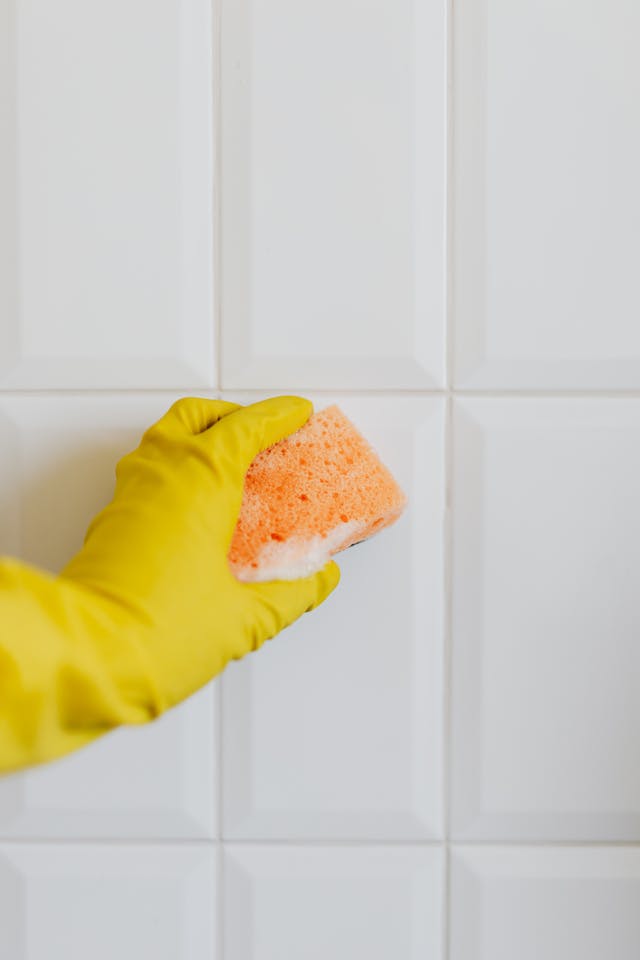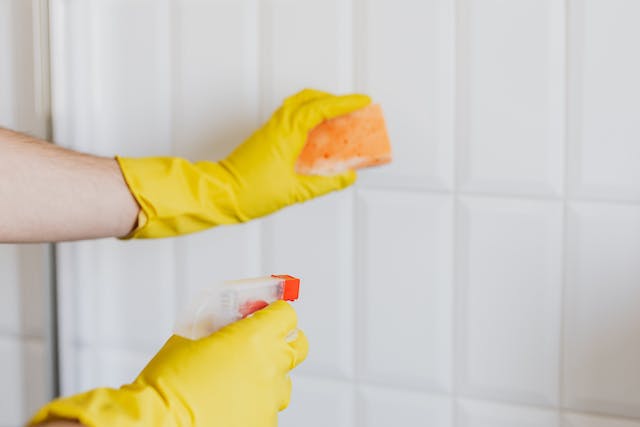There are different forms of ceramic tiles, but all of them use some type of grout to fill and seal the seams between them. Whether the tile is porcelain, traditional ceramic, a quarry tile, or natural stone, it is important that the seams between them are sufficiently filled with a material that stops moisture from leaking down to the underlayment. Aside from that, grout is important because it holds the tiles together, and it forms a strong network around the whole structure, which helps keep every tile in its place and safe from cracks or chips.
Just like tiles, grout is also versatile as it comes in different types for each kind of tile. There are three main types of grout, which are cementitious, epoxy, and furan, with variations available in each type. If you want to know more about them, you’re in the right place. Today, we are giving you different types of grout.
Cementitious Grouts
The main component of a cementitious grout is Portland cement. Aside from that, it also contains filler particles of different sizes, a water-retentive additive, and colored pigments. These are the traditional grouting material, which is commonly used in residential applications and also in some commercial applications. They also come in different colors to match or contrast with the tile.
Cementitious grout is mixed with water and applied using a trowel. The water-retentive agent that it contains retards the drying time and allows the cement to cure slowly for maximum hardness. When you use this type of grout with porous tiles, like slate, quarry, and other natural stone tiles, it can stain the surfaces. That’s why most professionals tend to seal porous tiles first before grouting. But it is not necessary with standard glazed tiles.
This type of grout is the most popular and can be used everywhere that a tile is installed. However, it can be porous and subject to staining. Therefore, all cementitious grouts should be sealed with a penetrating sealer every year or two to remain stain-free and waterproof.
Here are the different variations of cementitious grouts:
- Sanded Cementitious Grout: This type of grout includes fairly large sand particles that you can see and feel. It is usually used when the grout seams are 1/8 inch wide or more because the sand can provide extra bonding power to prevent cracking. However, some care is needed if using this type of grout on highly polished tiles because the sand can scratch the surfaces.
- Unsanded Cementitious Grout: This type of grout has a smoother texture, as the mineral it has are very fine powders with no noticeable grit. It is used when the grout seams are 1/16 to 1/8-inch wide. When you use this with wider seams, it may crack because it lacks the binding power that is offered by sanded grouts.
- Latex-Modified Grout: This type of grout is made with a latex polymer additive, which is either contained within the dry mix or added as the grout is mixed with water. It can enhance the water-proof nature of the grout while increasing its strength at the same time.
Epoxy Grouts
Epoxy grouts are different from cementitious grouts because they do not contain Portland cement. Water is also not used in the mixing process of this grout. It only includes an epoxy resin, silica fillers, pigments, and a hardener. Compared to cementitious grouts, this type of grout is less porous and a good choice in areas where acids and greases are present, like in kitchens.
Just like cementitious grouts, epoxy grouts also come in both sanded and unsanded forms. However, the type of sand used is different. Epoxy grouts can set up fast, which is a bit challenging for amateurs. This type of grout is also more expensive, but it is an excellent choice for places where maximum stain resistance is needed. However, keep in mind that epoxy grout can stain tile surfaces badly, especially those that are porous and unglazed, like quarry tiles and limestone. Therefore, before using epoxy grout on these tiles, they should be sealed first.
One of the best things about epoxy grouts is that they do not need to be sealed. However, it can lead to staining. You can clean epoxy grouts by scrubbing it with a mixture of bleach and water or vinegar and water.
- Modified Epoxy Grout: This one is a type of epoxy grout that is enhanced with Portland cement. It is similar to grouts that have Portland cement, and it also requires regular sealing and other procedures. But it is stronger, harder, and more stain-resistant compared to standard ones.
Furan Resin Grouts
Furan resin grouts are quite similar to epoxy grouts, but they are made of polymers of fortified alcohols that are highly resistant to chemicals. No water is used in this type of grout. It is a two-component system that contains a furan resin and a filler powder with an acid compound. The acid compound causes the furan resins to cure, forming a thermosetting resin that has an unrivaled chemical, physical, and thermalresistance.
This type of grout is used for grouting brick pavers and quarry tile. It is recommended to be used in areas that are exposed to chemicals and grease. The tile surfaces can be smooth, non-skid, or abrasive, depending on the intended use for the floor. For tile or brick surfaces, it should be coated with wax first to protect them from staining before the installation of furan. This type of grout is difficult to install and are usually used for industrial projects, like in dairies and laboratories.
When mixing this type of grout, precautions should be made to avoid breathing the vapors. Special skills are also needed for proper installation, which should be done when the temperatures are between 60°F and 90°F.
These are the different types of grouts. The cost of the installation of these grouts depends on the level of expertise of the contractor, the type of tiles to be installed, and the size of the area where the tile grout would be installed. We hope this article helped you in learning more about the different types of grouts.


